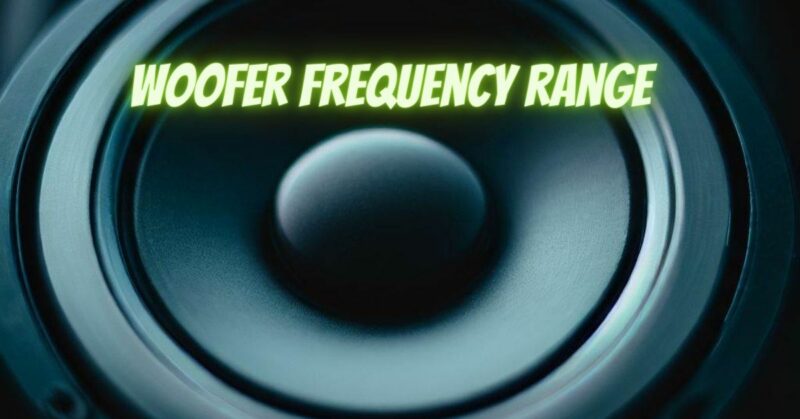Woofers are a vital component of speaker systems, responsible for delivering powerful and impactful bass and mid-bass frequencies. Understanding the frequency range of woofers is essential for designing and selecting the right drivers to achieve a balanced and dynamic sound reproduction. In this article, we will delve into the frequency range of woofers and their role in creating a rich and immersive audio experience.
- Frequency Range of Woofers: Woofers are designed to handle mid-bass and lower midrange frequencies, typically ranging from around 40Hz to 2kHz. This range encompasses the fundamental bass notes, providing the foundation and body to music, movies, and other audio content. Woofers reproduce instruments such as drums, bass guitars, and lower-pitched vocals, adding warmth, impact, and fullness to the sound.
- Bass Extension and Response: The lower end of the frequency range is where woofers shine, as they can reproduce deep bass notes with accuracy and power. High-quality woofers are engineered to provide excellent bass extension, reaching down to lower frequencies, allowing listeners to feel the impact of sub-bass tones. The response of the woofer in this frequency range significantly contributes to the overall depth and richness of the audio playback.
- Cone Material and Design: To handle the demanding low-frequency range, woofers are typically equipped with larger cones and robust construction. The cone material can vary and includes options such as polypropylene, treated paper, composite blends, or specialized materials. These cone materials strike a balance between stiffness and flexibility, enabling the woofer to move air effectively and reproduce accurate bass without distortion.
- Integration with Other Drivers: Proper integration of woofers with other drivers, such as tweeters and midrange drivers, is crucial for achieving a balanced frequency response. Crossover networks are used to divide the audio signal and direct specific frequency ranges to each driver, ensuring a seamless transition between them. The crossover point between the woofer and the other drivers is carefully selected to prevent frequency overlap and achieve a cohesive sound reproduction.
- Room Acoustics and Placement: Room acoustics and speaker placement play a significant role in maximizing the performance of woofers. The physical environment, including room dimensions, furnishings, and wall materials, can impact the bass response. Experimenting with speaker placement and considering room treatments, such as bass traps or acoustic panels, can help minimize unwanted resonances and standing waves, resulting in cleaner and more accurate bass reproduction.
- Amplification and Power Handling: Woofers require sufficient amplification power to deliver their full potential. Matching the power handling capabilities of the woofer with an appropriate amplifier ensures that it can reproduce bass frequencies without strain or distortion. It is essential to consider the recommended power range provided by the manufacturer to optimize the performance and longevity of the woofer.
Conclusion:
Woofers are integral to speaker systems, handling the mid-bass and lower midrange frequencies that provide body, impact, and fullness to audio playback. Understanding the frequency range of woofers allows for informed selection and integration with other drivers, ensuring a balanced and dynamic sound reproduction. Proper consideration of room acoustics, placement, and amplification enhances the performance of woofers, resulting in a rich and immersive listening experience that captures the full depth and power of bass frequencies.


